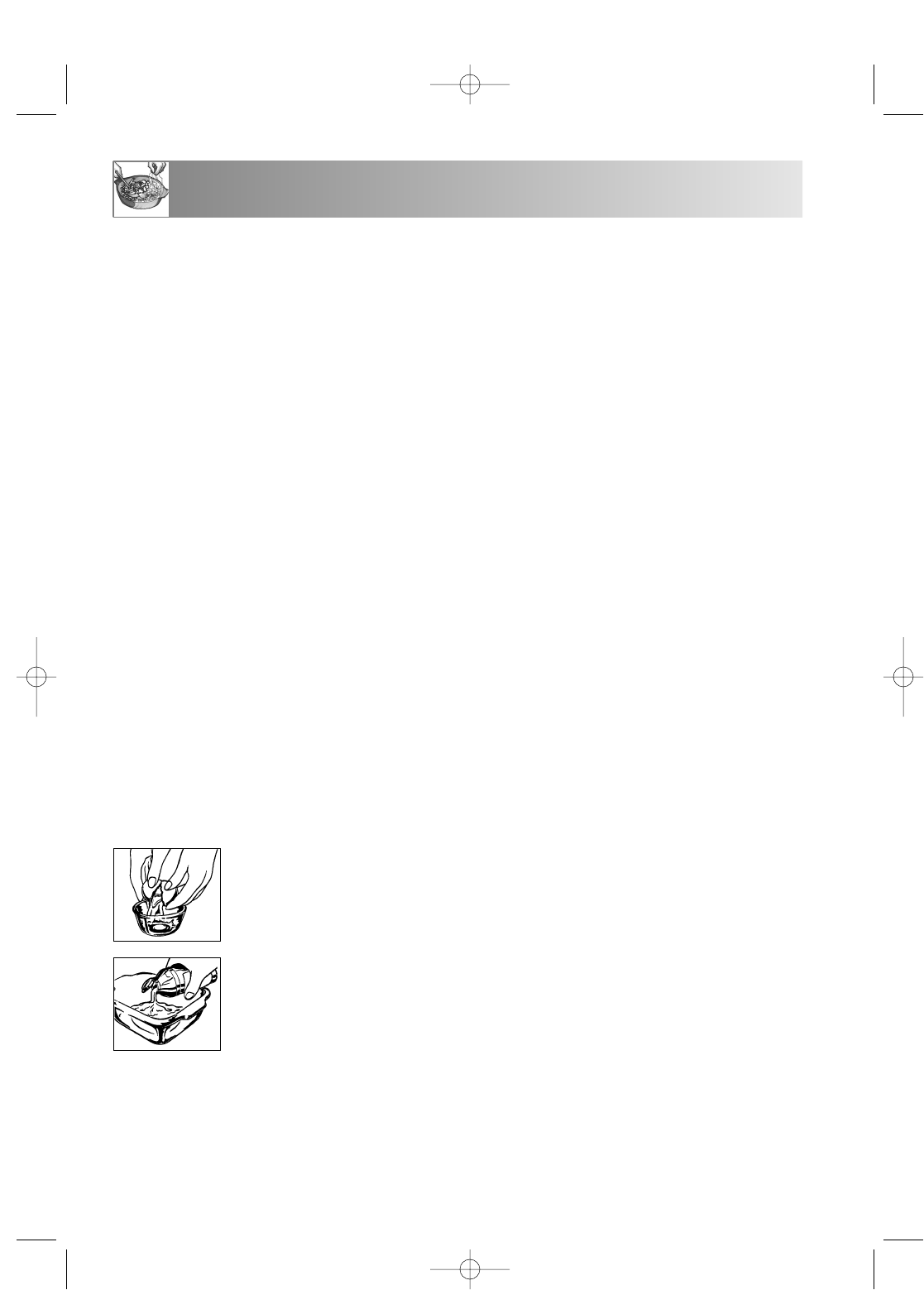
TIPS AND HINTS
24
BEFORE YOU START...
To make it as easy as possible to use the
microwave oven, we have put together a few hints
and tips for you.
Only switch on the oven when the food is already
inside.
SETTING THE COOKING TIME
Defrosting, re-heating and cooking times are
generally much shorter than in a conventional
oven or hob. So you will need to consult this book
for the recommended cooking times. It is better to
set shorter rather than longer cooking times.
Always test the food after the cooking time has
elapsed. It is better to then continue cooking it for
a little longer, than to have overcooked food.
STARTING TEMPERATURE
Defrosting, re-heating and cooking times depend
on the temperature of the food when you start. For
example, deep-frozen and refrigerated food will
need longer than food that is at room temperature.
Standard storage temperatures of food are assumed
for re-heating and cooking times (refrigerator
temperature of 5° C, room temperature of
approximately 20° C). For defrosting food a starting
temperature of approximately -18° C is assumed.
Cook popcorn only in special microwave safe
containers. Refer exactly to the manufacturer’s
instructions. Do not use a normal paper or glass
container.
Do not cook eggs in their
unbroken shells. Pressure builds
up inside the shell and this may
result in the egg exploding. Prick
the yolk before you cook it.
Do not heat oil or fat for deep-
frying inside the microwave
oven. It is impossible to control
the temperature of the oil and it
may suddenly splash out of the
pan.
Do not heat sealed containers such as jars or
tins. The pressure inside the container could cause
the container to explode. (The exception is when
you are making preserves).
ALL INDICATED COOKING TIMES...
are guidelines only. Cooking times may vary
depending on starting temperature, the weight and
composition (water, fat content, etc) of the food.
SALT, HERBS AND SPICES
Food cooked in the microwave oven retains its
taste better than with conventional cooking
methods. Use salt sparingly and as a rule only add
salt after the food has cooked. Salt binds liquids
and dries out the surface of food. Herbs and
spices can be used as normal.
TESTING THE FOOD
You can test whether food is cooked in the same
way as conventional cookery.
• Using a food thermometer. After cooking or re-
heating all foods have a certain internal
temperature. You can use a food thermometer to
test whether the food is hot enough, or ‘done’.
• Using a fork. Test fish with a fork. If the flesh is
not transparent and comes off the bone easily, it
is done. If it is overcooked, it will be brittle and
dry.
•Wooden skewer. Test cakes and bread by
sticking in a wooden skewer. If the skewer
comes out clean and dry, the food is ready.
WORKING OUT COOKING TIMES USING
THE FOOD THERMOMETER
After it has cooked, every drink or item of food
has a certain internal temperature. When it is
reached the cooking can be stopped, and the
result will be good. You can test the internal
temperature with a food thermometer. The
temperature chart on the next page gives most of
the important temperatures.
R-33STD English 10/12/2002 15:19 Page 24


















